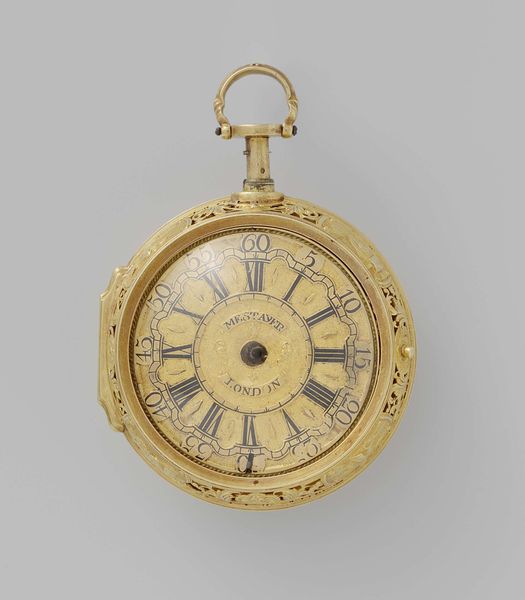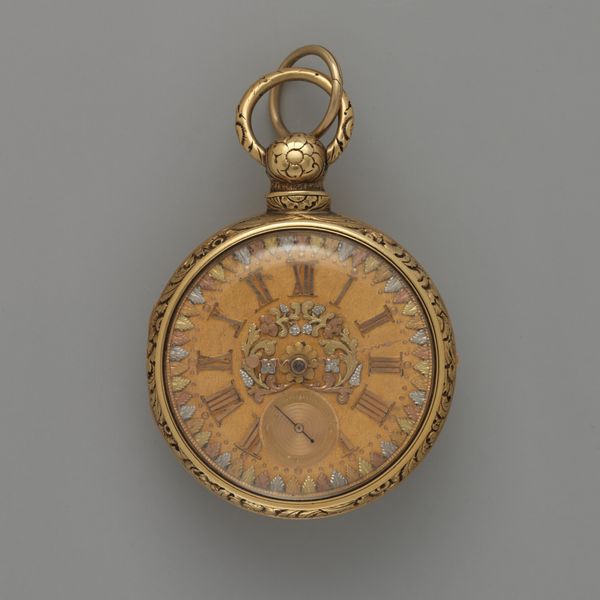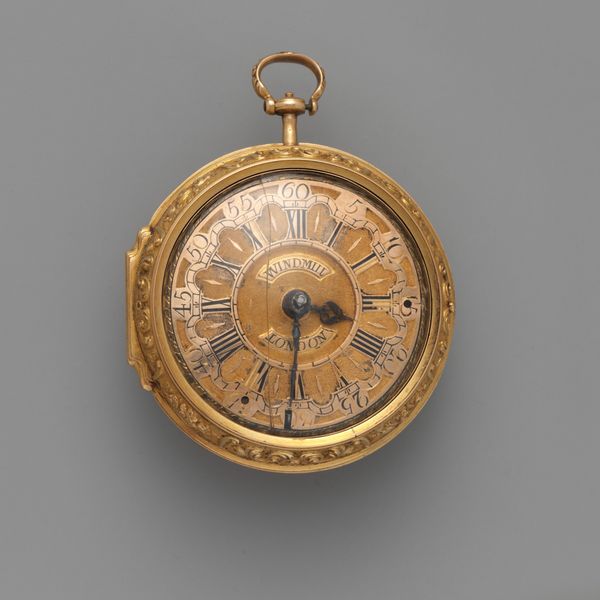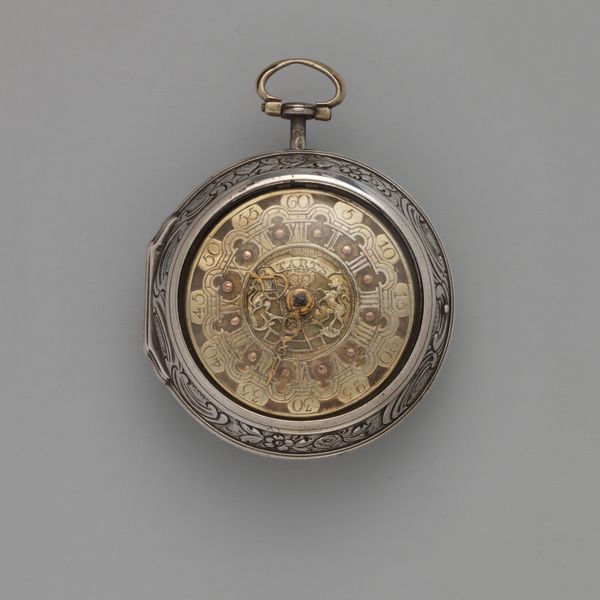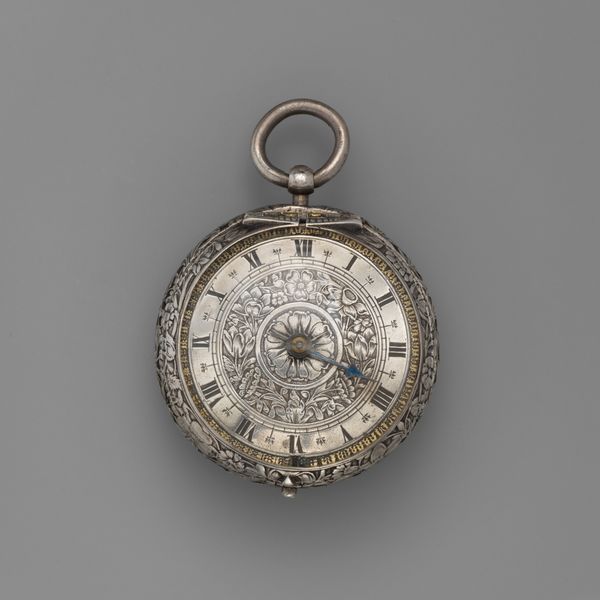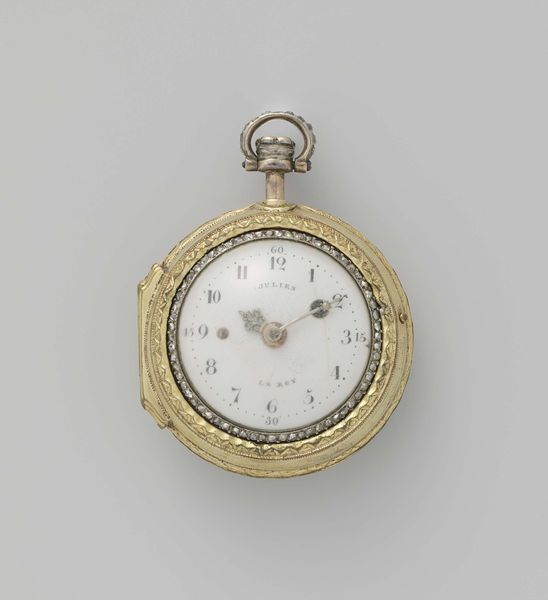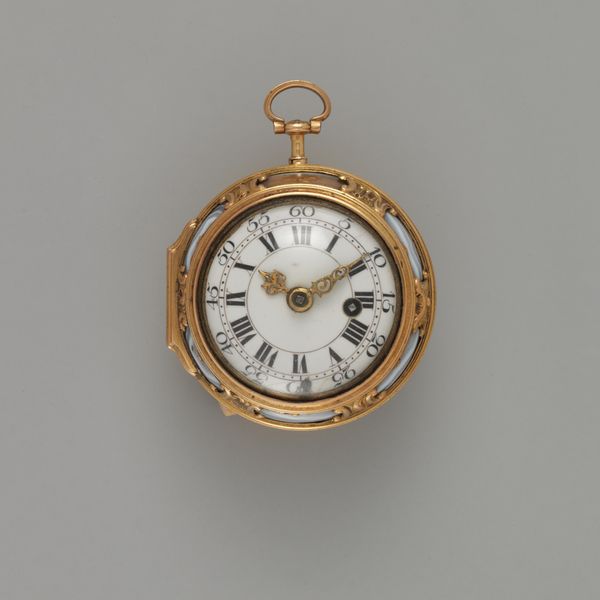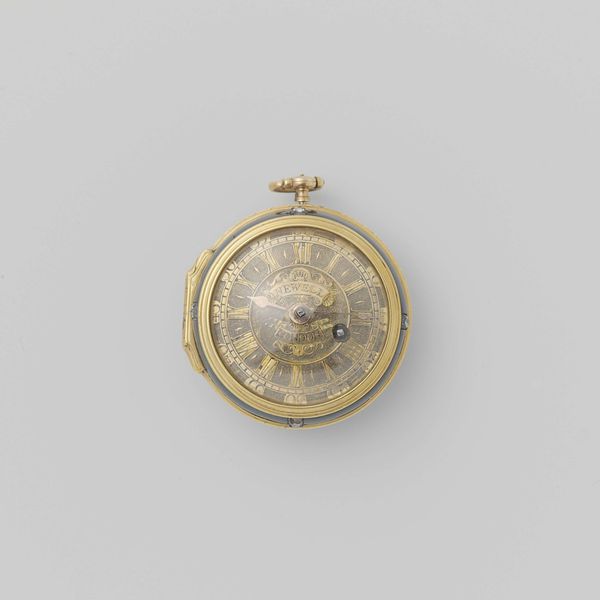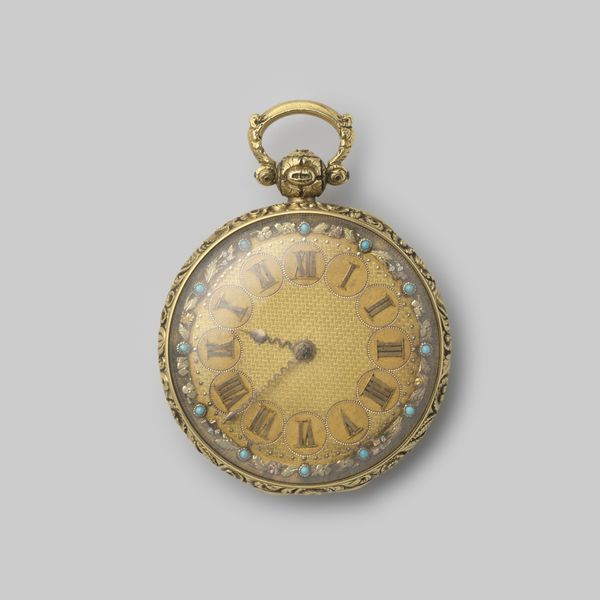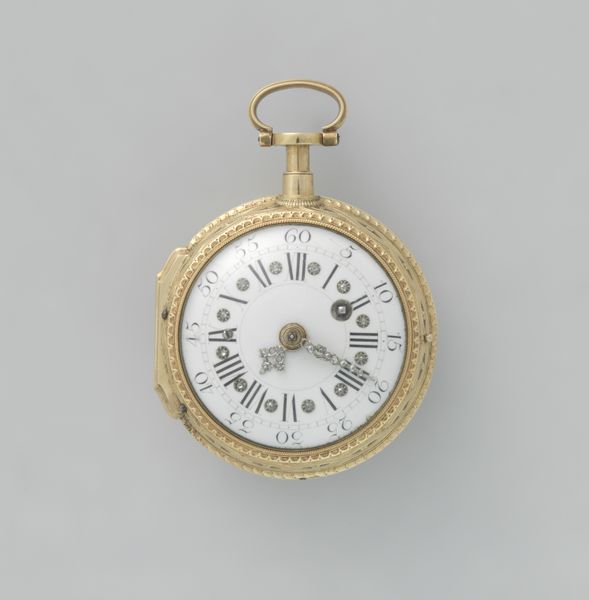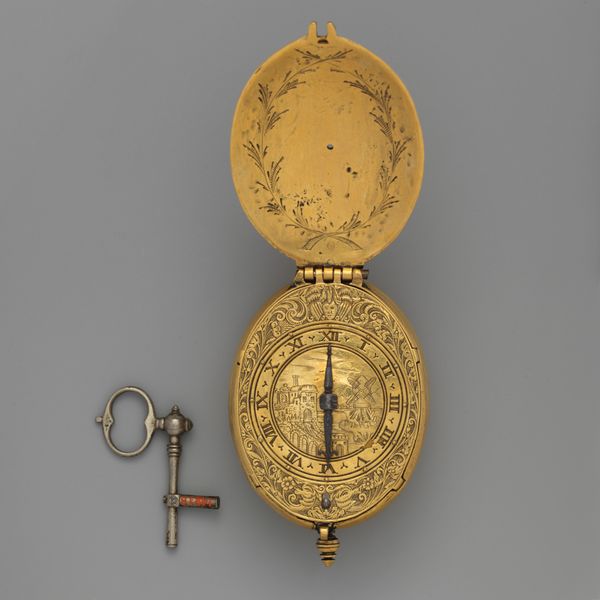
metal, gold, photography
#
portrait
#
metal
#
gold
#
photography
#
decorative-art
Copyright: Rijks Museum: Open Domain
Curator: Looking at this exquisite pocket watch, dating roughly from 1850 to 1860 and attributed to Moulinié Frères & Cie, one can immediately see the high value placed on personal timekeeping as a symbol of status and control during that period. Editor: My initial impression is pure delight! It has such a delicate, precious feel. The gold shimmers, and those tiny flowers seem almost lifelike, as if they might still carry a faint scent. Curator: Indeed. These ornamental flourishes reveal a great deal about the societal roles imposed on individuals. Consider how a decorative art object such as this, frequently a personal gift, acted as a powerful reminder of the passage of time. Time which could, simultaneously, be the source of anxieties of economic change. Editor: The floral motif framing the watch face really pulls at something primal in me. Flowers have always been symbolic, from birth and renewal to mourning and remembrance. The watch face, then, becomes a constant memento mori, reminding the wearer of life’s ephemerality even amidst technological advancement. Curator: Exactly. Moreover, let's reflect upon the historical and social context that created the cultural landscape that esteemed an individual’s productivity. Women's work was particularly invisible in many contexts, so to receive such an extravagant gift from a male relative indicates their subservient social status as they must adhere to time constraints within these imbalanced roles. Editor: Fascinating how these themes emerge. Notice how each gemstone punctuates the design. They serve almost as markers on the cyclical wheel of time. Also, given the watch's intimate placement, worn close to the body, this arrangement suggests something deeply personal. Perhaps each gemstone served as a talisman. Curator: The symmetry of the decorative elements can be seen as reflecting a rigid social structure. However, as society entered the Industrial Revolution and greater demand was placed on individual’s time, items like this served as a cultural force used to discipline women, reinforcing notions of a work ethic built by men. Editor: Thinking about those hidden layers enriches my understanding considerably. Before, I simply saw a pretty object. Curator: And that's the beauty of interpreting historical objects – we begin to recognize both surface appeal and structural issues related to gender, race, and social order, too. Editor: Absolutely. Looking at it again, I notice those floral patterns in a new light. Thanks to that I’ll carry with me this understanding, from now on, as a new perspective in viewing works of decorative art!
Comments
No comments
Be the first to comment and join the conversation on the ultimate creative platform.
